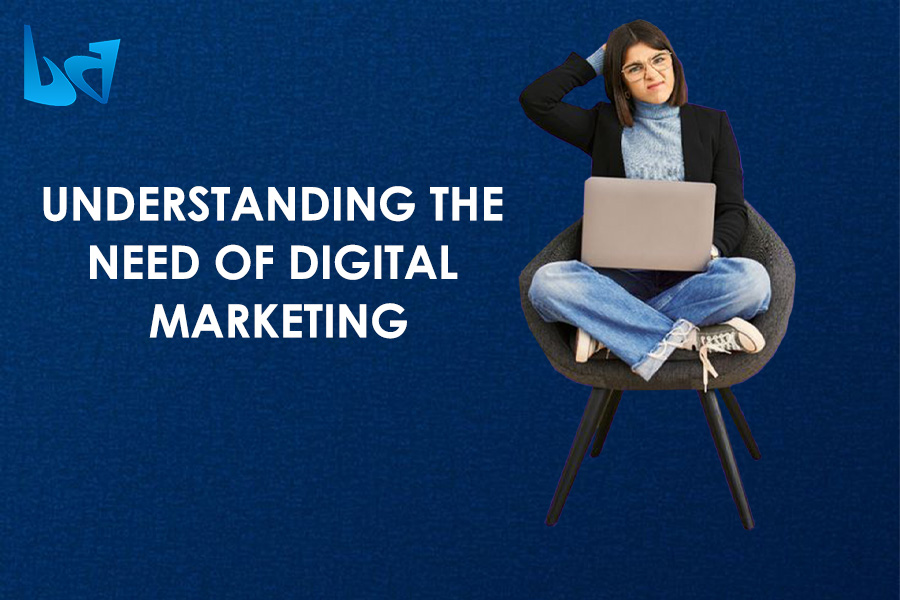Doesn’t it seem unreal how everything is now on the internet? From your tailoring services to finding your foundation shade, to tech giants who solve major problems, to almost everything else under the sun! In such a digitally-driven age, it is neither advisable nor feasible to steer clear of an online presence that brings in customers and fulfils your brand’s goal. This is exactly why you need to understand the need for digital marketing and here’s your guide.
As businesses aim to thrive online, digital marketing comes as the knight in shining armour. With a variety of tools and strategies, it helps businesses to reach and engage with their target base, thereby improving rapport and ultimately increasing sales and profitability.
If you’re new to this field, it can seem complex, but breaking it down into fundamental components can make it easier to comprehend. Here’s a primer on digital marketing basics to help you get started.
What is Digital Marketing?
As the name suggests, digital marketing basically refers to all the endeavours you undertake using the internet or an electronic device. It includes a variety of strategies, plans, and tools, all of which are aimed towards reaching the target consumer base. Digital marketing makes use of channels, such as search engines, social media, email, SMS, websites, etc. The final goal is to connect with potential customer, make them aware, and hopefully lead to conversion, all while interacting with them and guiding them.
Key Components of Digital Marketing
Search Engine Optimization (SEO)
SEO refers to building your website in a way that your content ranks higher on search engine result pages. In simple words, the content on your website is such that when someone searches for relevant things on Google, your website comes within the first few results. Ideally, page 1 or 2. The main aspect of SEO includes keyword research, on-page optimisation, such as meta tags and content quality, and off-page optimisation, such as backlinks.
Content Marketing
Content marketing refers to creating and distributing content that’s relevant to your audience. This could include blogs, videos, infographics, podcasts, and much more. The goal of content marketing is to provide useful information to the audience that solves their queries as well as builds trust.
Social Media Marketing
Social media is a thriving space. It has helped many content creators and small businesses to grow into massive brands. Social media marketing leverages platforms like Facebook, Instagram, Twitter, and LinkedIn to connect with your audience. These endeavours include sharing your product and services and their features, building brand awareness, and also engaging with followers. Ultimately, the goal is to drive traffic to your website, create robust relations, and skyrocket revenue.
Pay-Per-Click (PPC) Advertising
PPC advertising essentially involves placing ads on search engines and other platforms. For this, you pay each time someone clicks on your ad. Google Ads are one of the most popular PPC platforms. PPC allows you to target specific keywords as well as demographics. Also, it provides immediate visibility and traffic.
Email Marketing
You’ve all received emails from your favourite brands, right? Mails introducing new products, giving offers, as well as disseminating information; that is email marketing. It’s a direct communication with your audience. Email marketing involves sending promotional messages, newsletters, and updates to your subscribers. The first step to email marketing is building a targeted email list. Then comes crafting compelling messages, and ultimately, analysing campaign performance to improve engagement.
Analytics and Data Tracking
Data accumulation and analysis are the foundation of successful digital marketing as they help measure the success of each campaign you’ve run. Tools like Google Analytics help you track website traffic, user behaviour, and conversion rates. Consequently, by analysing data, you can gain insights into what’s working, what needs improvement, and what to do next.
Developing a Digital Marketing Strategy
Creating a successful digital marketing strategy involves several key steps:
1.Define Your Goals
Start by setting clear, measurable goals. First, decide if you want to increase visibility, increase website traffic, generate leads, or boost sales. Each objective will further guide your strategy in a unique way and help you measure success.
2. Know Your Audience
As per your product or service, you need to understand your target audience. Know their demographics, interests, and online behaviour and accordingly tailor your marketing efforts to their liking, preferences, and needs. For instance, if you sell a product catering to the age group 40+, having a Gen Z tonality will not take you anywhere.
3. Choose the Right Channels
Select the digital channels that best align with your goals and audience. Each channel has its strengths, so focus on those that will deliver the most value for your business.
4. Create a Content Plan
Develop a content plan that outlines what content you will create, when and where it will be published, and how it will be promoted. Consistency and quality are key to engaging your audience.
5. Monitor and Adjust
Continue to monitor your digital marketing performance using analytics tools. If something does not seem to work, further adjust your strategies.
Digital marketing is a multifaceted field. When done right, it can significantly enhance your business’s online presence and growth. And, nothing works better than partnering with experts who have A to Z of this field at their fingertips. While you can be busy building your brand, they can take care of everything else.





